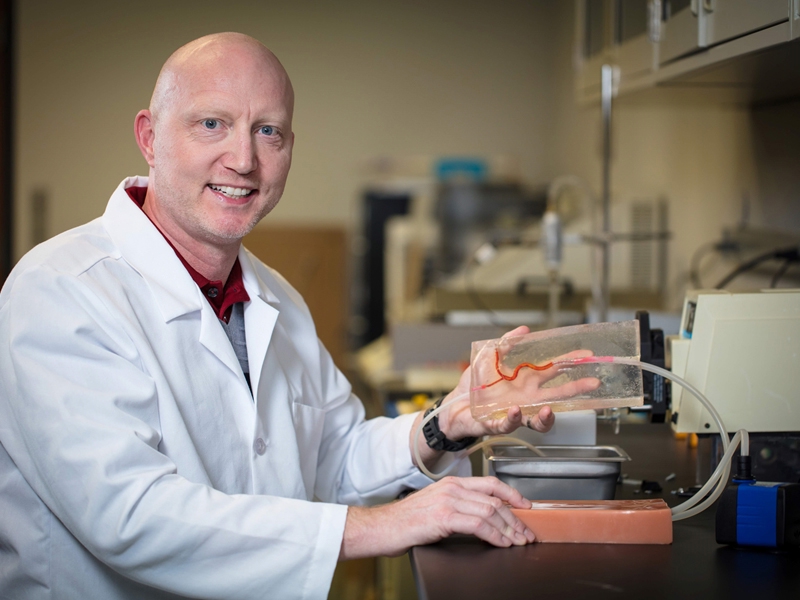
When Morton Jensen was a computer and electrical engineering student in Denmark, where he was born, he was required to do a one-semester internship on a research or industry-related project. He did his with the Bioengineering Department of Aarhus University Hospital, where he witnessed heart surgeries on humans, including a heart transplant. The experience proved transformative.
"I thought it was extremely fascinating with the heart being a pump," Jensen explained. "You could look at the heart as a mechanical device, adding pressure to fluids, and the fluids flowing into the blood vessels."
He also heard about some researchers doing experiments on large animals in the same hospital.
"I saw what the researchers were able to do on large animals in the basement of that hospital -- making measurements on the hearts, both electrical and force measurements, flow measurements and pressure measurements. And that's why I became interested in this work."
One of the people working in the basement was J. Michael Hasenkam, who was part of the team that invented the Transcatheter Aortic Valve Implantation, or TAVI, a revolutionary procedure that enables surgeons to implant a new heart valve with a catheter by going through a blood vessel in the armpit or groin. Ten years later, after Jensen had earned a master's in biomedical engineering at the Georgia Institute of Technology, Hasenkam would become Jensen's Ph.D. adviser back at Aarhus.
Jensen is now an associate professor of biomedical engineering at the U of A who specializes in medical devices and experimental cardiovascular surgery. He is also the principal investigator at the Cardio Biomechanics Laboratory. Cardiovascular disease is the number one killer worldwide; Arkansas and its surrounding states have the highest death rates from cardiovascular disease in the U.S. The CBLab brings engineers and clinicians together to address serious conditions such as heart attack, stroke, heart failure and congenital heart disease while creating novel approaches in the prevention, diagnosis and treatment of cardiovascular disease.
Since he saw that first heart transplant, Jensen has helped contribute intellectual property to nine patent applications. This has included development of lifelike artificial tissues to aid medical students in their training and a heart valve created from animal tissues that can be implanted in humans.
Jensen also recognized that there could be a correlation between the pressure fluctuations within a vein and hydration levels, such that if you knew what the pressure was inside the vein, you could determine how hydrated someone was. He is now collaborating with other researchers on a device to measure the dehydration level of patients more quickly, enabling first responders and hospital staff to diagnose dehydration levels with greater accuracy.
More recently Jensen was a co-inventor of a device that can customize the size and shape of angioplasty balloons, as well as a system for inserting the balloons and stents into a blockage at a coronary bifurcation, which is where arteries split into daughter branches. This juncture can be a difficult place to perform surgery, and this system enables surgeons to work on a straighter platform. This technology was recently licensed through the U of A's Technology Ventures by Vascugenix, a company based in Little Rock specializing in medical devices for interventional cardiology surgery.
A theme that runs through Jensen's work is collaboration. All of his patent applications share the names of fellow collaborators, and one of his main collaborators is his wife, Hanna Jensen, an MD who is assistant professor in the Department of Surgery at UAMS. So it's not surprising when he says the best advice he can give people is "You should never ever burn a bridge. You never know when a bridge becomes useful later in life."
Topics
Contacts
Hardin Young, assistant director of research communications
UREL
479-575-6850, hyoung@uark.edu
Andy Albertson, director of communications
Research and Economic Development
479-575-6111, aalbert@uark.edu